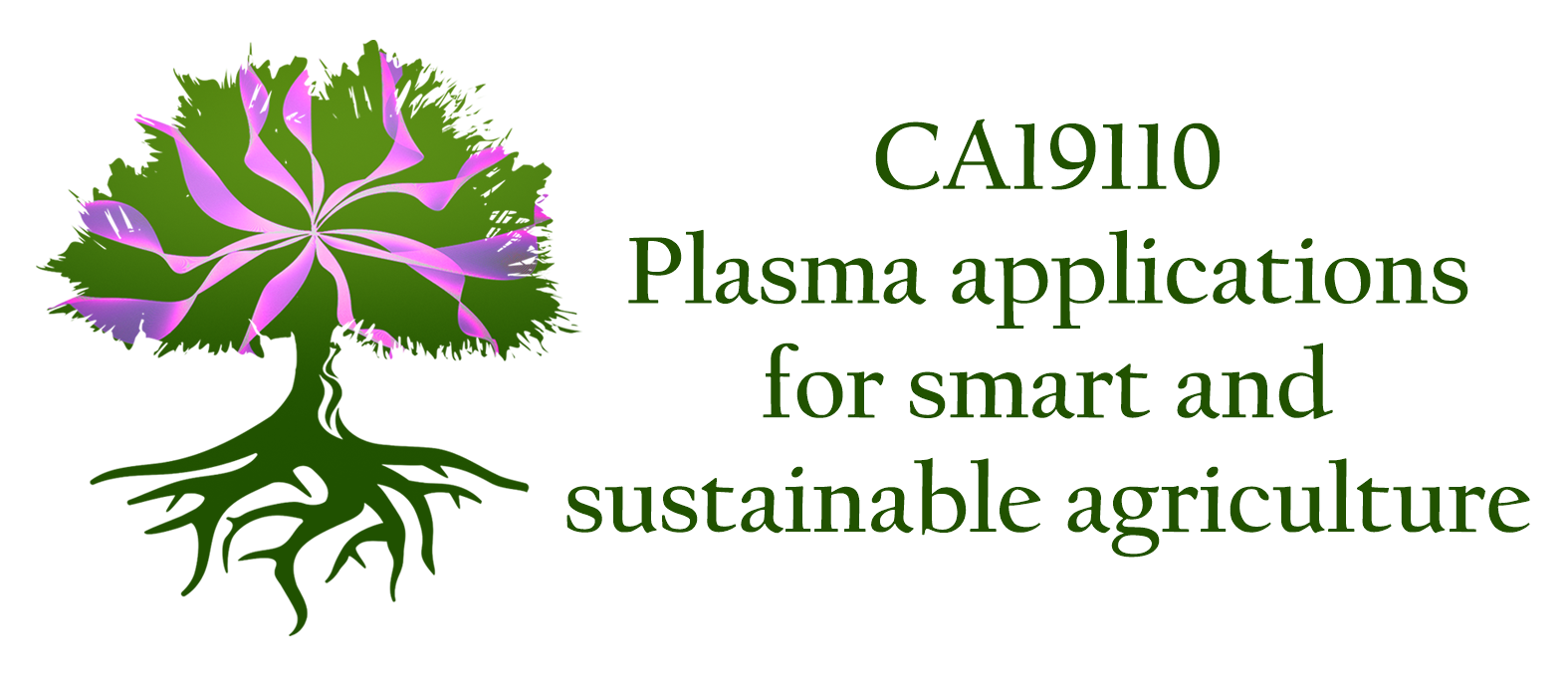The workgroup focuses on applying active plasmas, afterglows, and plasma-activated water (PAW) for the treatment of plant tissues, plants, and soils. The main aim is to define standard protocols and procedures for plasma and/or PAW usage to stimulate plant growth, development, and stress resilience, resulting in better yields. Moreover, plasma processes and treatment modes will be developed and optimized. Concerning PAW application, this workgroup topic is closely connected to WG4. Thus, members of the community involved in tasks of workgroups 3 and 4 are encouraged to work closely together. This workgroup’s participants will be involved in one or more of three basic actions covering a broad area of research and applications.
WG3 - Low-temperature plasma treatment of plants
Tasks
T3.1. PAW Treatment of plants and soils. This task addresses the application of PAW for evaluating the stress priming and pathogenic inactivation/decontamination potential on plants and the fertilization potential of soils. Depending on findings upon qualitative and quantitative PAW physio-chemistry, delivered by workgroup 4, optimized application strategies for plant and soil treatments will be applied. The following investigations will be conducted:
- different PAW treatment modes will be investigated for fertilization of plants through leaves and/or soils, for stress priming, and decontamination/pathogenic inactivation;
- physiological responses in plants after treatments by PAW will be investigated in respect to biomass production, antioxidant system, and stress markers (e.g., gene and protein expression, primary and secondary metabolites);
- special attention will be paid to the possible toxicity of the applied PAW on plants (enzymes, DNA, proteins, chlorophyll content, etc.);
- duration/persistence of PAW treatments on plants will be investigated together with the withdrawal period if some unwanted side effects are discovered;
- combination of plasma-assisted treatment together with classical compounds will be investigated.
T3.2. Direct treatment of plants by using active plasma and afterglow. This task addresses the application of active plasma and afterglow for evaluating the fertilization, stress priming, and pathogenic inactivation/decontamination potential on plants. Direct treatments with gaseous plasma and afterglow, enriched with reactive oxygen and nitrogen species (RONS), will be applied to photosynthetic active plant tissues such as leaves and shoots. The following investigations will be conducted:
- different plasma treatment modes will be investigated for fertilization and stress priming of plants through leaves. The pathogenic inactivation potential of plasma applied to the plants will be investigated.
- physiological responses in plants after plasma treatments will be investigated in respect to biomass production, antioxidant system, and stress markers (e.g., gene and protein expression, primary and secondary metabolites);
- results will be compared to the results of classical treatments, and the effects of the combination of plasma with classical treatments will be investigated.
T3.3. Development of plasma systems optimized for the treatments of plants and soils. This task comprises the technical development and diagnostics of plasma treatment systems applied to plants and soils. Construction, diagnostics, and modeling of active and afterglow plasma systems will be performed close to T3.1.-3.2., responding to the needs resulting from the applications of active plasmas and afterglows for plant treatment. Where possible, laboratory-scale prototypes will be further developed into small and portable devices that can find use in, e.g., greenhouses. Detailed instructions and protocols will be defined as well as life cycle assessment will be performed.
Subscribe our Newsletter
